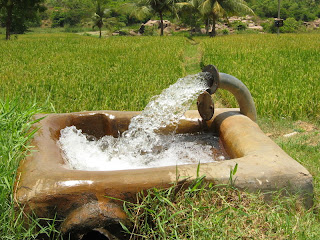
NEPAL is a small ,beautiful and landlocked contry.It have many water resources and second's most rich country of water resources in world.There are three parallel ecological zones running east to west: the Terai, the Hills and the Mountains. Nepal's resource base for agriculture is severely limited by topographical constraints. Only about 20 percent of the total land area is under cultivation. The predominant position occupied by agriculture in the Nepalese economy is due to the fact that about 90 percent of the population depend on agriculture, which contributes about 43 percent of GDP and 70 percent of total export earnings at nominal prices (Agricultural Perspective Plan, 1994). Although agriculture dominates the national economy, its contribution is rather declining. Nepal, once a rice-exporting country, has now to import rice occasionally to meet domestic needs. The identified reasons for the poor performance of  agriculture are: inadequate provision of irrigation, production inputs, credit, market and extension of appropriate technology to support production growth (Agricultural Perspective Plan, 1994). Among these factors, irrigation has been identified as the key to accelerate, intensify and sustain agricultural growth.
agriculture are: inadequate provision of irrigation, production inputs, credit, market and extension of appropriate technology to support production growth (Agricultural Perspective Plan, 1994). Among these factors, irrigation has been identified as the key to accelerate, intensify and sustain agricultural growth.
 agriculture are: inadequate provision of irrigation, production inputs, credit, market and extension of appropriate technology to support production growth (Agricultural Perspective Plan, 1994). Among these factors, irrigation has been identified as the key to accelerate, intensify and sustain agricultural growth.
agriculture are: inadequate provision of irrigation, production inputs, credit, market and extension of appropriate technology to support production growth (Agricultural Perspective Plan, 1994). Among these factors, irrigation has been identified as the key to accelerate, intensify and sustain agricultural growth.
0 comments:
Post a Comment